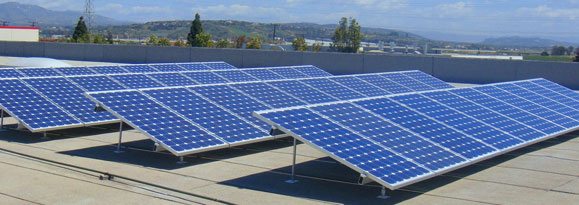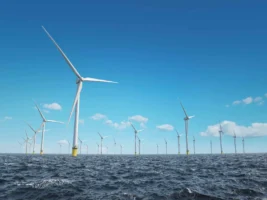Over the last few weeks I was fortunate to get the opportunity to speak at 10 different events from Townsville to Perth and a whole lot of cities in between.
If you really want to understand what’s going on in the PV market, chatting with more than 500 solar business owners is a great place to start – and from the feedback, most of the delegates got as much from the exercise as I did.
The majority of sessions I was speaking at were held by Redset, who I have to give big credit to for organising a whirlwind tour of the country and really delivering huge value for their guests.
The Redset Information Sessions combined a great mix of speakers covering topics that were highly relevant and really well presented, by some of the industry’s top companies.
Redset Managing Director (Ross Young) opened each day with an introduction and a comparison between the US and Australian Commercial market evolution.
I followed with a review of the Senate Enquiry into electricity prices and the Energy White Paper, and then some comparisons to how these major policy documents might impact on Commercial PV opportunities in the future.
Rod Seares from Canadian Solar gave a great presentation on the history and details behind PV technology and their progress. Q Cells, Power-one, Power Router and Solar Plus all gave great training and education sessions on their products too, with plenty of time for fiddling around with real products.
However, the highlight of the session for me was the afternoon sessions presented in each city by network utilities, backed up by personal conversations I had with some of them outside the sessions.
Although we heard about important local and company issues from each of them, several common themes emerged which having staggering relevance to our industry; so much so that the goal posts for commercial PV are being shifted right now.
Network value of PV
Almost without exception, the network companies we heard from see minimal benefit – and a whole lot of problems from PV.
There are a multitude of reasons for the problems but in a nutshell it’s because they can’t control what PV does. They have no control over when, where or how much PV energy is injected and this has created very real technical challenges for them in controlling voltage and distortion.
This wasn’t a problem 12 or 18 months ago, but as the penetration of PV has accelerated, it has become an increasingly significant issue.
Understandably, they are simply not set up to cater for massive reverse energy flows and their equipment and cost recovery mechanisms are not able to efficiently cope with the situation they have been handed. I actually feel just a little bit sympathetic.
Take Energex’s case study for example. On one of their feeder lines they have around 1.4MW of PV installed. On a sunny day, so much energy is being injected that the load on this feeder is lower at midday than it is at 3am in the morning. That’s a great thing, except that networks gradually increase voltage as the day (and load) rises; so in this case they have to throttle back the voltage to prevent it overshooting, and if a cloud bank passes it can slump and then rise dramatically. It can work if it’s planned and managed; but we have all collectively failed to collaborate effectively on this issue so it’s causing problems in some cases.
Data we saw also demonstrated that the morning and afternoon peaks haven’t changed much so their “bad times” are just as bad. Although PV generation matches Commercial load beautifully, successive State and Federal policy makers have deliberately focused on the voter-rich residential segments, rather than ideal but voter-poor Commercial and Industrial segments.
There is also an unintended financial consequence for network operators. Energex estimate that they have around 50,000 customers who will not be billed for any energy over the coming years and many more whose bills will dramatically reduce. This is great news for consumers but does leave network utilities with a problem, caused by a regulatory environment that ignores PV. Networks make revenue for line maintenance and upgrades from DUOS; one element of our electricity bill. It is mostly charged based on the kWh that are billed – so no billed kWh means no revenue.
For Energex, this represents a lost revenue stream worth around $100M a year. This is a huge problem if nothing changes and once again highlights why regulations need updating.
Network rule changes
The issues described have driven a number of the networks to introduce and ever more complex set of rules for PV, which vary by company and state of course.
Western Power has a rule that effectively bans exported PV power for systems >100kW. Horizon Power has its solar smoothing rule for systems over 3.5kW. Most network companies have rules about phase balancing and some have rules dis-allowing exports on less than all three phases if one phase drops out, requiring additional control equipment.
Some are talking about inverter based kVa limits, others are talking and kW limits and some have (or are considering) regulations around kWh’s delivered. What is consistent is that they all want to limit the energy flows to suit their situations and a number have introduced or are considering application and technical assessment fee’s for connection of systems greater than 4 or 5kW.
So rules are changing and many more potential changes are being considered; be warned.
Having regulations and rules are not a bad thing, they have the potential to set a clear framework for when and where to connect and everyone is in the same boat. However, the current dog’s breakfast of ever changing rules is creating unnecessary complexity and a myriad of unknown factors that for the moment, distort the offers in the market. Clearly, more changes are required in the next few years too, if the regulatory and revenue issues are to be addressed.
Consequences
There are always consequences from changes and often, unintended ones. We heard examples of oversized PV being used (on smaller inverters) to stretch the kWh’s earlier and later in the day. We saw modelling which demonstrated how even small 5kW systems may, in some circumstances be forced to disconnect from the grid or pay for network equipment upgrades, if they push distribution systems over voltage thresholds; and you may not know until after the system is sold and installed.
We also heard about one case where an installer sold a 100kW system without considering the impact on the net consumption and how that might in turn impact on the tariff being offered. In this case, the reduction in consumption resulted in a much higher tariff and changed the entire economic proposition for the worse – after a promise was made. Not good.
The good news is there are solutions to these issues; regulatory, hardware and software solutions are already available in Australia in many cases and certainly overseas, which we’ll look at in a separate story.
The key here seems to be not re-inventing the wheel and getting some co-ordination.
Nigel Morris is the director of Solar Business Services
This article was originally published by SolarBusinessServices. Reproduced with permission










